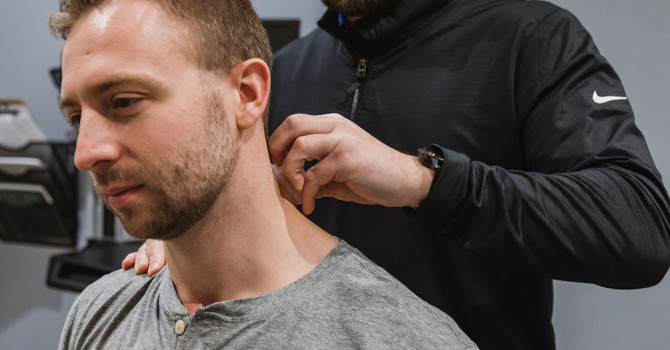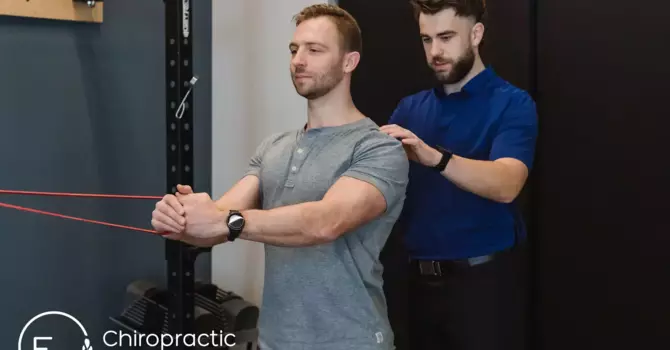
If you’ve ever been in a car accident, sports collision, or even experienced a sudden fall, you may have felt fine right afterward—only to wake up the next morning with neck pain, headaches, or stiffness. That’s the hidden nature of whiplash.
As a Saskatoon Chiropractor, I see many patients who underestimate whiplash because it doesn’t always cause immediate pain. But untreated whiplash can lead to chronic issues with mobility, posture, and joint function that last for months or even years.
The good news? With proper chiropractic care, most people recover fully and return to their normal routines without lingering symptoms. Here’s what you should know—and what to expect when you visit E3 Chiropractic + Wellness.
What Is Whiplash?
Whiplash happens when your head and neck are suddenly whipped backward and forward, stretching the muscles, ligaments, and joints beyond their normal range of motion.
This type of injury commonly occurs in:
-
Rear-end car collisions
-
Contact sports like hockey or football
-
Slips and falls
-
Roller coasters or sudden jerking motions
Common symptoms include:
-
Neck pain and stiffness
-
Headaches (often starting at the base of the skull)
-
Shoulder or upper back discomfort
-
Dizziness, fatigue, or blurred vision
-
Difficulty turning your head fully
Sometimes these symptoms take hours or days to appear as inflammation and tension build in the tissues.
Why Ignoring Whiplash Can Be a Problem
Many people assume whiplash will simply go away on its own. While mild cases may improve with rest, untreated whiplash can lead to long-term consequences like:
-
Chronic neck pain or headaches
-
Reduced neck mobility
-
Muscle imbalances and weakness
-
Early joint degeneration or arthritis
Addressing whiplash early helps prevent these issues and supports faster recovery.
How Chiropractic Care Helps
At E3 Chiropractic + Wellness, our approach to whiplash focuses on three key goals: restore mobility, reduce pain, and rebuild strength.
Here’s how we do it:
-
Gentle chiropractic adjustments – Restore normal movement in the neck joints and relieve pressure on irritated tissues.
-
Soft tissue therapy – Release tension and improve circulation in overworked or strained muscles.
-
Rehabilitation exercises – Rebuild strength and stability in the neck and upper back to prevent recurring pain.
-
Posture and ergonomic coaching – Help you move and work in ways that reduce strain on healing tissues.
Each plan is customized based on your specific injury, pain levels, and lifestyle.
What to Expect During Your First Visit
If you’ve never seen a chiropractor after an accident, here’s what the process looks like:
-
Comprehensive assessment – We’ll discuss your accident, symptoms, and medical history, followed by a detailed exam of your neck, spine, and posture.
-
Personalized treatment plan – You’ll receive a clear explanation of what’s happening and a step-by-step recovery plan tailored to you.
-
Hands-on treatment – Adjustments and soft tissue work start to relieve tension and improve motion.
-
Home care guidance – You’ll get simple stretches, exercises, and ergonomic tips to support healing between visits.
Most patients feel noticeable improvement within the first few sessions, with continued progress over the following weeks.
Patient Story
“Melissa,” a 29-year-old office worker, came to our clinic two weeks after a rear-end collision. At first, she thought her stiffness would fade, but the pain started spreading into her shoulders and causing headaches.
After just a few chiropractic sessions focused on gentle adjustments and soft tissue release, Melissa noticed her headaches had nearly disappeared. Within a month, she regained full neck movement and was sleeping comfortably again—without relying on painkillers.
Tips to Support Whiplash Recovery at Home
In addition to your chiropractic treatments, these simple habits can help speed your recovery:
-
Apply ice in the first 48 hours to reduce inflammation, then switch to gentle heat for stiffness.
-
Stay active – light walking and gentle neck movements help keep joints from stiffening.
-
Prioritize good posture – avoid slouching at your desk or looking down at your phone for long periods.
-
Use a supportive pillow – keep your neck aligned while you sleep.
Avoid prolonged rest—it can make muscles weaker and slow your progress.
Final Thoughts
Whiplash might not always feel serious at first, but it’s an injury that deserves attention. With the right chiropractic care, you can recover faster, restore mobility, and protect your spine from future issues.
Key Takeaway: Don’t ignore lingering pain or stiffness after an accident. Chiropractic care helps your body heal properly—so you can move, work, and live pain-free again.
Click HERE to schedule a free discovery call at E3 Chiropractic + Wellness and start your journey back to pain-free living.





